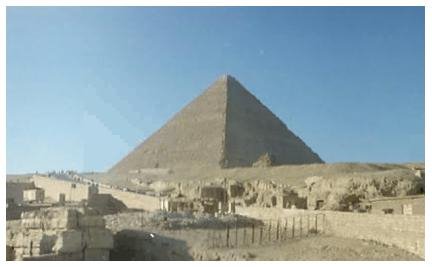The most important and famous pyramids of Egypt are the three great pyramids at Giza, on the west bank of the Nile River. They were built between 2660 and 2560 BC for the kings Cheops, Chephren (Khafre), and Mycerinus. The pyramids were meant to house the pharaohs' bodies and serve as reminders of their almighty power. The pyramids are the oldest of the Seven Wonders of the World and the only ones to survive to modern times

The most important and famous pyramids of Egypt are the three great pyramids at Giza, on the west bank of the Nile River. They were built between 2660 and 2560 BC for the kings Cheops, Chephren (Khafre), and Mycerinus. The pyramids were meant to house the pharaohs' bodies and serve as reminders of their almighty power. The pyramids are the oldest of the Seven Wonders of the World and the only ones to survive to modern times
The pyramids of Egypt, in the desert of Giza and Saqqara outside Cairo, were old before the other six wonders were built. The tradition of such monumental tombs for the pharaohs began with the step pyramid of Zoser (3d dynasty). Supposedly designed by the engineer Imhotep, this pyramid gave the impression of a stone hill 60 m (197 ft) high. The interior is almost solid, with gangways and burial chambers (some of which are empty, serving as decoys for thieves). Successive pharaohs copied and enlarged the form, adding limestone facings. The largest is the Great Pyramid of Khufu (Cheops), about 147 m (481 ft) high on a base 230 m (755 ft) square. Khafre (Chephren), Menkaure (Mykerinos), and others built successively less impressive pyramids.
No comments:
Post a Comment